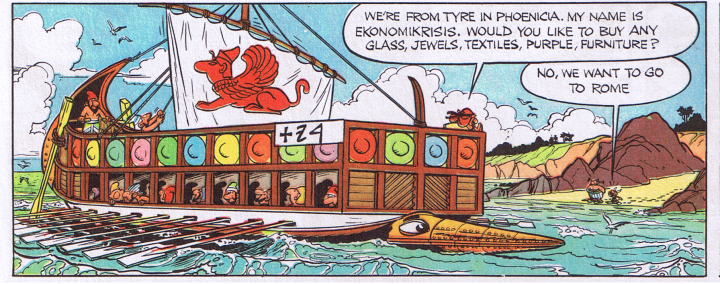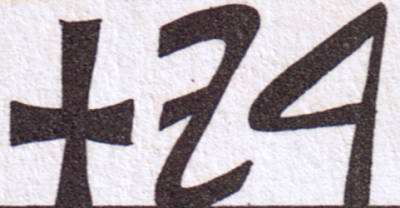The year is 50 BC. All Gaul is occupied by the Romans. All? No! One small village of indomitable Gauls still holds out against the invaders…
A lot of the charm of the Asterix series by René Goscinny and Albert Uderzo comes from the way satirical projections of modern life (e.g. chariots on dual carriageways with service stations staffed by the Michelin man or the Rugby game in Asterix and Britain) are combined with very accurate and carefully drawn reconstructions of the first century B.C.E. For example compare this illustration of Olympia from Asterix and the Olympic Games with this reconstruction.

However, occasionally they make a slip. In Asterix and the Black Gold a few pages after a similar aerial view of Jerusalem closely based on the model at the Holyland Hotel, we see Asterix and Obelix walking out of the mediæval Lion Gate. And what does the sign on this Phoenician ship in Asterix the Gladiator say?

I only recently noticed that and realized that the sign is intended as Phoenician script. Here is a closeup from another panel:

The letters are rosh, yod, tau, or in Hebrew transcription רית. (Phoenician is not yet encoded in Unicode, but according to the current beta of Unicode 5.0, they will soon be ???).
Since the ship comes from Tyre, I am guessing that the authors intended the sign to be the name of its home port, and tried to transcribe “Tyre” into Phoenician, from left to right. In fact, the Phoenician for Tyre is צור or צר (?? in Unicode 5.0), and should appear something like 